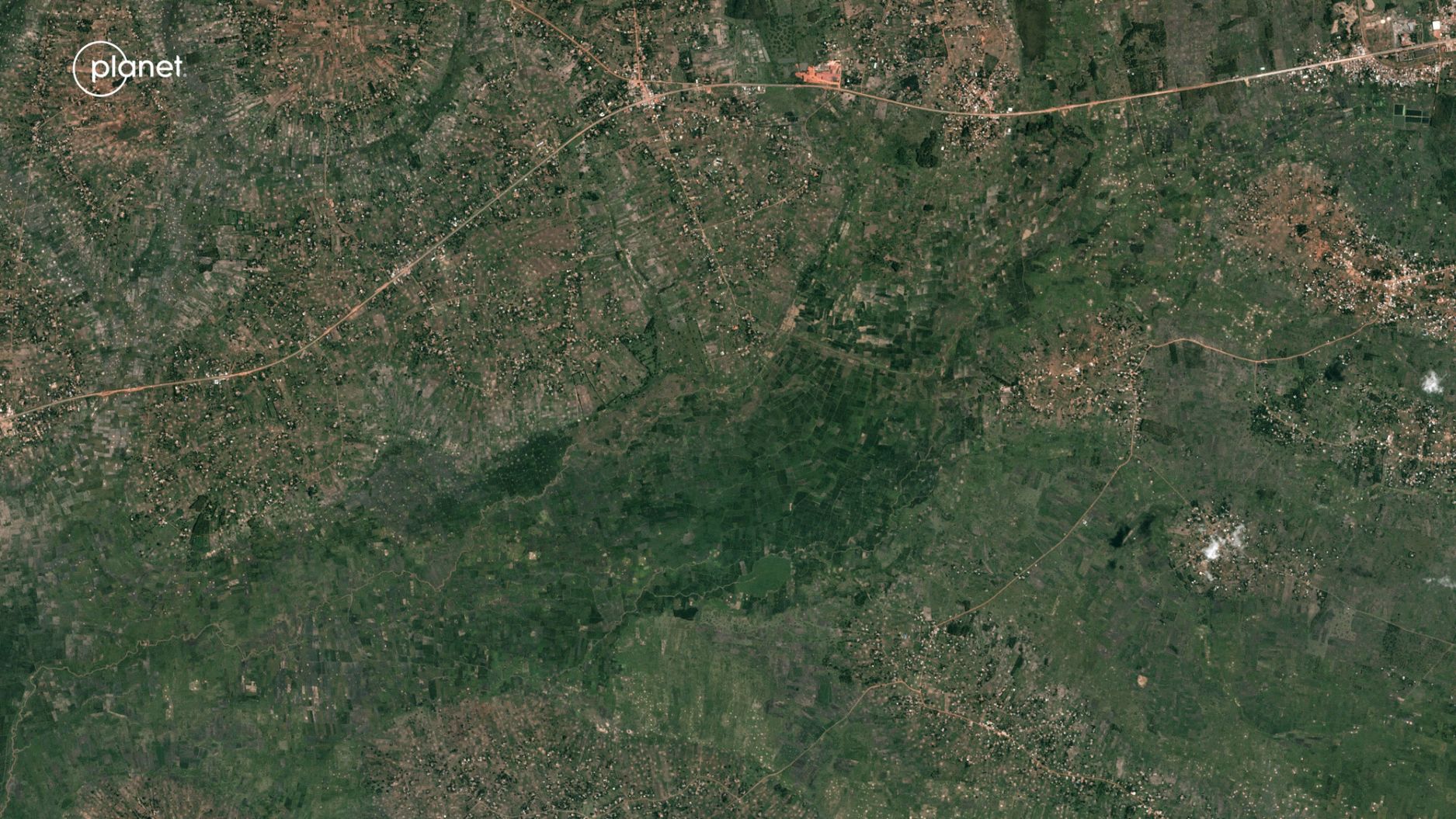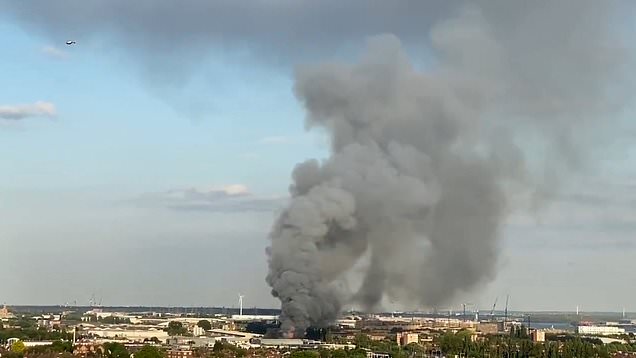Climate Whiplash: A Report On Increasingly Dangerous Impacts On Cities Worldwide

Table of Contents
Increased Frequency and Intensity of Extreme Heat Events
Cities, with their extensive concrete and asphalt surfaces, are particularly vulnerable to extreme heat events. The urban heat island effect amplifies the impact of heatwaves, creating dangerously high temperatures within urban areas compared to surrounding rural regions.
Urban Heat Island Effect Amplified
The urban heat island effect traps heat, leading to significantly higher temperatures in cities during heatwaves. This has profound consequences:
- Increased mortality rates: Heatwaves contribute to thousands of premature deaths annually, placing immense strain on healthcare systems.
- Strain on healthcare systems: Hospitals and emergency services are overwhelmed during periods of extreme heat, leading to delays in care and potentially worsening health outcomes.
- Economic losses: Reduced worker productivity due to heat stress results in significant economic losses for businesses and industries.
- Infrastructure damage: Extreme temperatures can cause damage to roads, bridges, and other infrastructure components.
Heatwave Preparedness and Mitigation Strategies
To combat the escalating threat of extreme heat, cities need to implement effective mitigation and preparedness strategies:
- Green infrastructure initiatives: Planting trees, creating green roofs, and developing urban parks can significantly reduce the urban heat island effect.
- Improved building design: Implementing energy-efficient building designs and incorporating heat-reflective materials can reduce indoor temperatures and lessen the impact of heatwaves.
- Early warning systems: Implementing effective early warning systems for heatwaves can help protect vulnerable populations and enable proactive interventions.
- Public health campaigns: Educating the public about heat-related risks and promoting preventative measures can minimize health impacts. These campaigns should also focus on providing information on heat mitigation strategies.
Rising Sea Levels and Coastal Flooding
Many of the world's largest and most economically significant cities are located along coastlines, making them extremely vulnerable to the effects of sea level rise and coastal flooding. The increasing frequency and severity of storm surges exacerbate this threat.
Threat to Coastal Megacities
Coastal megacities face existential threats from rising sea levels and storm surges, resulting in:
- Increased flooding frequency and severity: Coastal communities experience more frequent and severe flooding events, disrupting daily life and causing extensive damage.
- Displacement of populations: Rising sea levels and coastal erosion force populations to relocate, creating climate refugees and straining resources in other areas.
- Damage to infrastructure: Roads, bridges, power grids, and other essential infrastructure are vulnerable to damage from flooding and saltwater intrusion.
- Saltwater intrusion into freshwater sources: Rising sea levels contaminate freshwater sources, impacting drinking water supplies and agriculture.
Coastal Protection Measures and Relocation Strategies
Addressing this challenge requires a multi-pronged approach incorporating both adaptation and mitigation strategies:
- Seawalls and other coastal defenses: Constructing seawalls and other coastal defenses can help protect against storm surges and rising sea levels, although these solutions are often expensive and may not be sustainable in the long term.
- Managed retreat (relocation): In some cases, managed retreat—the planned relocation of communities from high-risk coastal areas—may be the most effective solution. This represents climate migration on a large scale and requires careful planning and community engagement.
- Improved drainage systems: Upgrading drainage systems to handle increased rainfall and storm surge can reduce the risk of urban flooding.
- Investment in resilient infrastructure: Designing and constructing infrastructure that can withstand the impacts of sea level rise and coastal flooding is crucial for long-term resilience.
More Frequent and Intense Storms and Extreme Precipitation
Climate whiplash is also manifesting in the form of more frequent and intense storms and periods of extreme precipitation, leading to devastating consequences for cities.
Urban Infrastructure Vulnerability
Urban infrastructure is often ill-equipped to handle the extreme weather events associated with climate change:
- Damage to transportation systems: Heavy rainfall, flooding, and high winds can severely damage roads, bridges, and public transportation systems, disrupting daily commutes and emergency services.
- Power outages: Storms can cause widespread power outages, impacting essential services and leaving communities vulnerable.
- Sewer system failures: Overwhelmed sewer systems lead to sewage backups and widespread flooding in urban areas.
- Landslides: Heavy rainfall can trigger landslides in hilly urban areas, causing damage to property and infrastructure.
Improving Disaster Response and Preparedness
To mitigate the impacts of severe storms, cities need to invest in improved disaster response and preparedness strategies:
- Improved drainage systems: Implementing effective drainage systems can reduce the risk of urban flooding during periods of heavy rainfall.
- Early warning systems: Establishing robust early warning systems for severe weather events allows for timely evacuations and protective measures.
- Emergency response plans: Developing comprehensive emergency response plans ensures that cities are prepared to respond effectively to extreme weather events.
- Community preparedness programs: Engaging communities in preparedness efforts empowers residents to take protective measures and contribute to disaster response.
- Resilient building codes: Implementing building codes that incorporate climate resilience measures can reduce damage to buildings and infrastructure during extreme weather events.
The Economic Burden of Climate Whiplash
The economic costs of climate whiplash are staggering and will only increase without concerted action.
Direct and Indirect Costs
The economic impacts of climate-related disasters on cities include:
- Costs of repairs and rebuilding: Repairing and rebuilding damaged infrastructure after extreme weather events incurs substantial costs.
- Lost productivity: Disruptions to transportation, businesses, and services lead to significant losses in productivity.
- Insurance claims: Insurance companies face massive payouts for damage caused by climate-related disasters.
- Healthcare expenses: The increase in heat-related illnesses and injuries leads to significant healthcare costs.
- Tourism losses: Extreme weather events can severely impact tourism, leading to significant economic losses for cities reliant on tourism revenue.
Investing in Climate Resilience for Long-Term Savings
Investing in climate resilience measures is not just an expense; it's a crucial investment that yields long-term savings:
- Reduced long-term costs: Proactive adaptation measures reduce long-term costs compared to the expenses incurred in responding to disasters.
- Job creation in green sectors: Investing in climate resilience creates jobs in green technologies and sustainable infrastructure development.
- Attracting investment in resilient cities: Cities that demonstrate a commitment to climate resilience are more attractive to investors.
Conclusion
Climate whiplash is a clear and present danger, imposing an escalating burden on global cities. The increased frequency and intensity of extreme heat, rising sea levels, severe storms, and extreme precipitation events are causing significant damage to infrastructure, impacting public health, and straining economies. To combat climate whiplash, cities must prioritize investment in mitigation and adaptation strategies, including improved infrastructure, early warning systems, and community preparedness programs. Ignoring the threat of climate whiplash will only result in exponentially higher costs in the future. We must act now to build climate-resilient cities and mitigate climate whiplash impacts. Learn about the specific climate change risks in your city and advocate for policies that support climate resilience and the reduction of greenhouse gas emissions. Let's work together to build a safer, more sustainable future and combat climate whiplash.

Featured Posts
-
 East London Fire 125 Firefighters Battle Shop Blaze
May 31, 2025
East London Fire 125 Firefighters Battle Shop Blaze
May 31, 2025 -
 Cycle News Magazine 2025 Issue 12 Your Guide To The Latest Cycling Trends
May 31, 2025
Cycle News Magazine 2025 Issue 12 Your Guide To The Latest Cycling Trends
May 31, 2025 -
 Vermisste Person Im Bodensee Aktuelle Informationen Zur Suchaktion In Bregenz
May 31, 2025
Vermisste Person Im Bodensee Aktuelle Informationen Zur Suchaktion In Bregenz
May 31, 2025 -
 The Good Life Defining Your Values And Priorities
May 31, 2025
The Good Life Defining Your Values And Priorities
May 31, 2025 -
 Zverev Stunned By Griekspoor In Indian Wells Tournament
May 31, 2025
Zverev Stunned By Griekspoor In Indian Wells Tournament
May 31, 2025
